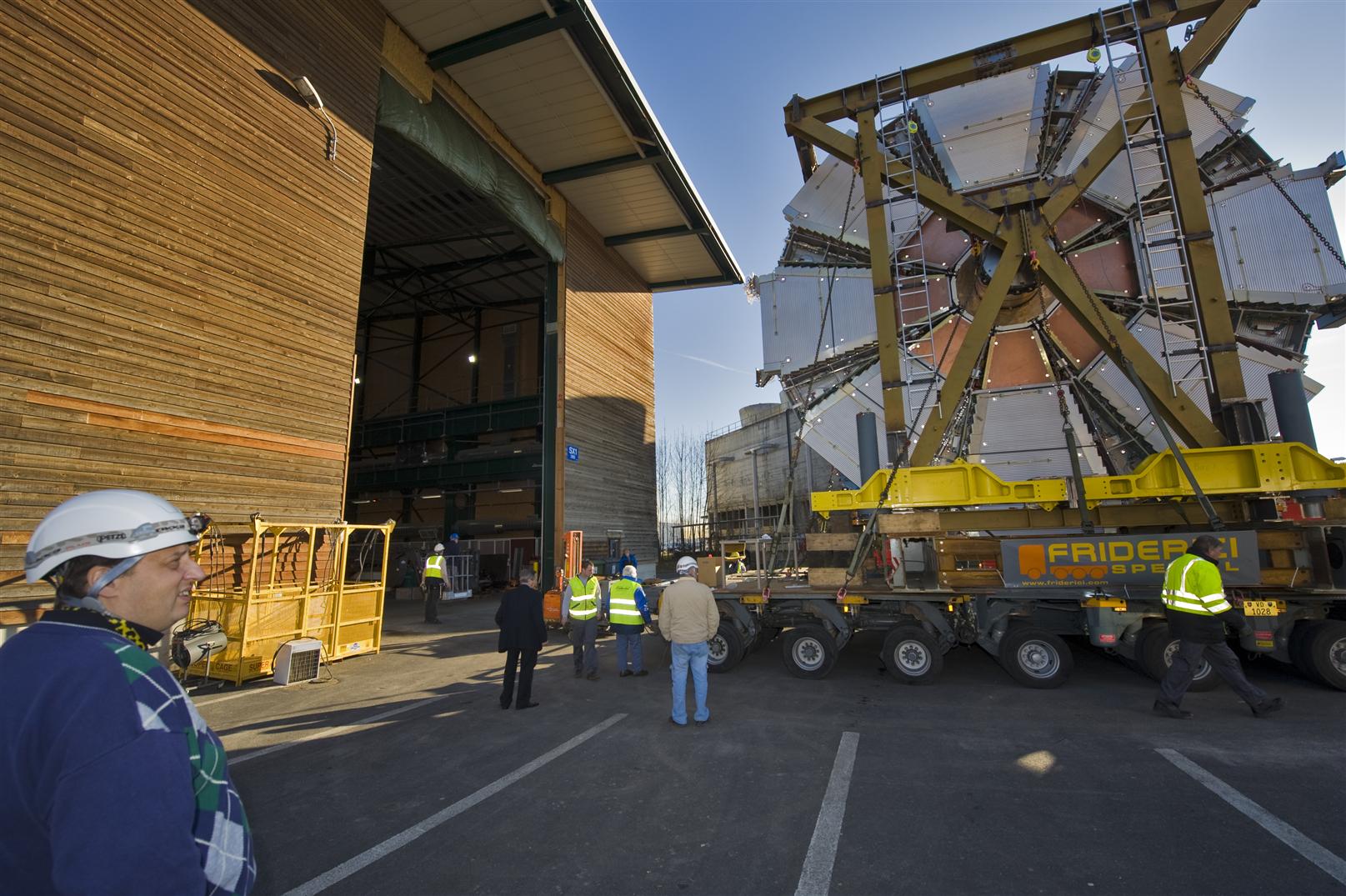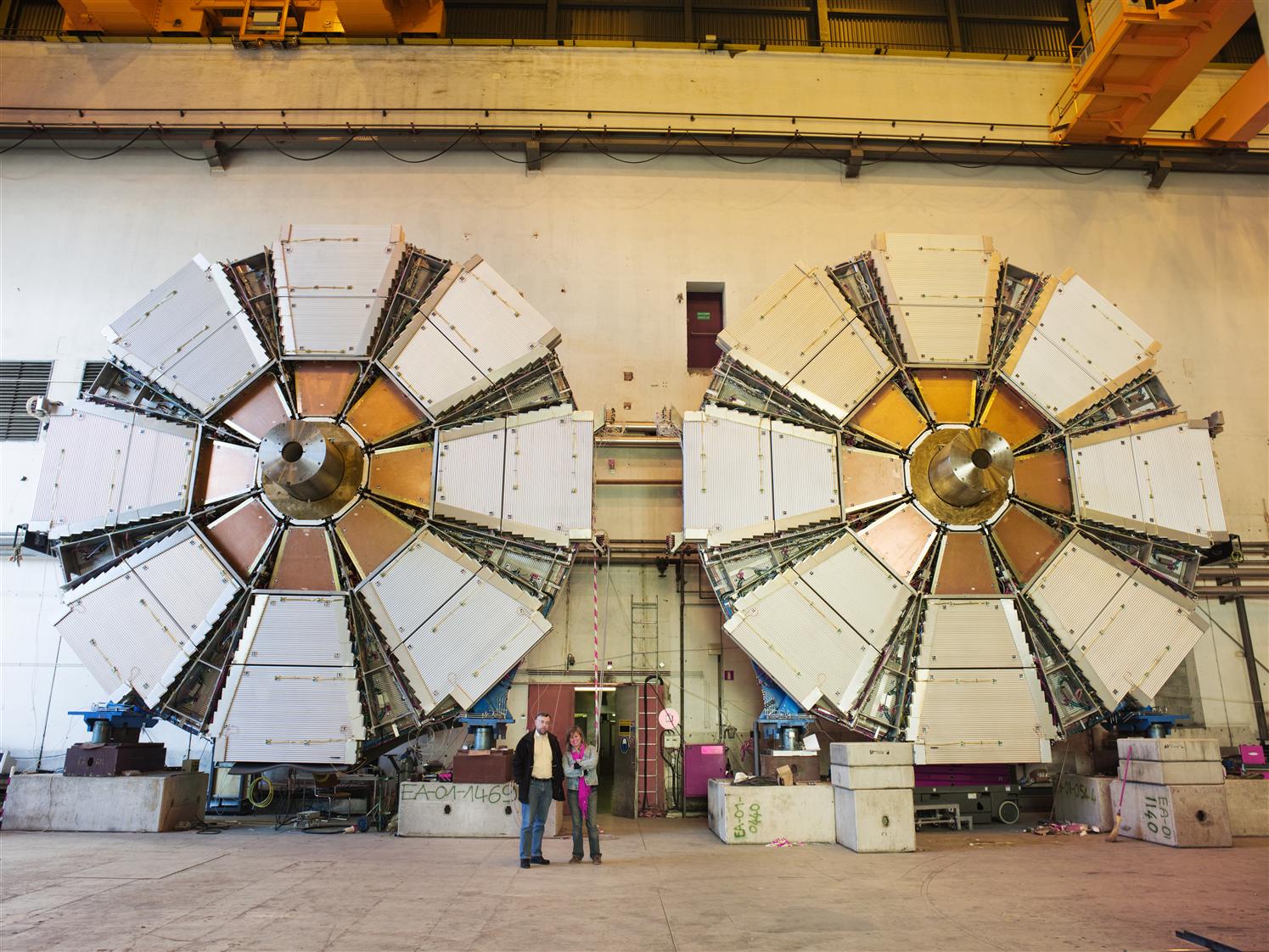A fine pair of gifts for St Valentine’s Day
Like briefly separated twin sisters, ATLAS’s small wheels were once again united at the experiment’s surface building at Point 1 on St Valentine’s Day. The lowering of the small wheels into the tunnel will mark the end of the installation of detector components for the experiment.
In a delicate operation, the small wheels were slowly and painstakingly transported one after the other on a lorry towing a double trailer from Building 191 to the ATLAS experiment surface building at Point 1.
The two small wheels of the ATLAS muon spectrometer will be the last detector components to be installed in the cavern. The first made its final journey on 8 February and the second on 14 February, ready to be lowered into the cavern. At the time this edition of the Bulletin went to press, this latter operation had not yet been completed.
Modest in scale compared with the large 25 m diameter muon spectrometer wheels (see Bulletin Nos. 41 and 42, 2007), the small wheels still have a diameter of 10 m and each weigh 140 tonnes. Unlike the large wheels, whose assembly was completed in the cavern, they have been assembled at the surface in Building 191 on the Meyrin site. In view of their scale, transporting them has been a delicate operation. Like a giant slow-moving tortoise, a lorry pulling two trailers transported the first small wheel to Point 1 on 8 February. Less than a week later, the lorry was back to fetch the second one for St Valentine’s Day. "We are delighted and relieved to have completed this operation on schedule", says Ariella Cattai, the physicist in charge of the small wheel project. "The assembly of these modules represented a real challenge. We had to put together the various scattered parts - and coordinate the different teams to do that - in record time."
Each measuring 10 metres in diameter and weighing almost 140 tonnes, the small wheels will allow the muon tracks to be reconstructed with an extreme precision of 10 microns.
Like some outsize jigsaw puzzle, ATLAS’s small wheels took a year to assemble. They comprise thousands of components from all over the world (Bulgaria, Serbia, the Czech Republic, Pakistan, Russia, Israel, USA, and Japan, etc.), which have been assembled with millimetre precision.
"We are very proud of having put together these detectors, which will be located in the forward position in the area closest to the beam’s axis," explains George Mikenberg, who is in charge of the muon spectrometer project. "They will allow the muon tracks to be reconstructed with extreme precision down to 10 microns".
Sandwiched between the calorimeter and the two end-caps of the torroid magnet, the small wheels are the muon detectors closest to the interaction point in the small-angle region. They will be located in a highly radioactive area. They consist of three of the four types of muon chambers used in the ATLAS experiment, trigger chambers (TGCs) and two types of precision chamber (CSCs and MDTs). They each consist of two disks placed one against the other and slotted together with a central cylindrical component. One of them is shielding which will absorb particles other than the muons. The other acts as the support for the detection chambers. These two wheels complete ATLAS’s highly sophisticated muon spectrometer, whose purpose is to detect the eagerly awaited disintegration of the Higgs boson into two muon pairs.



